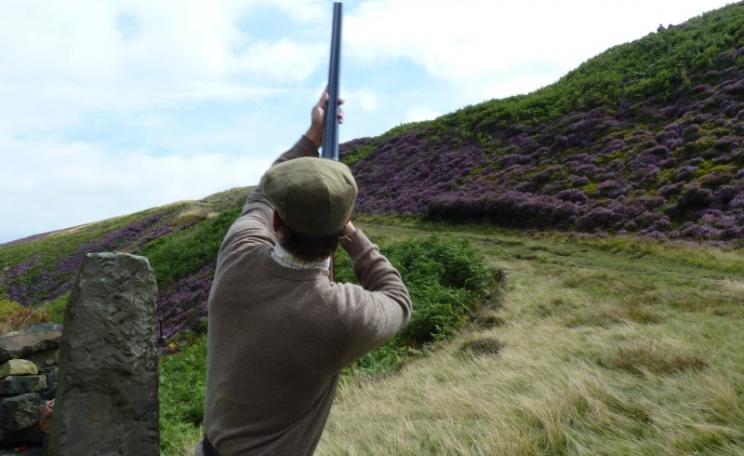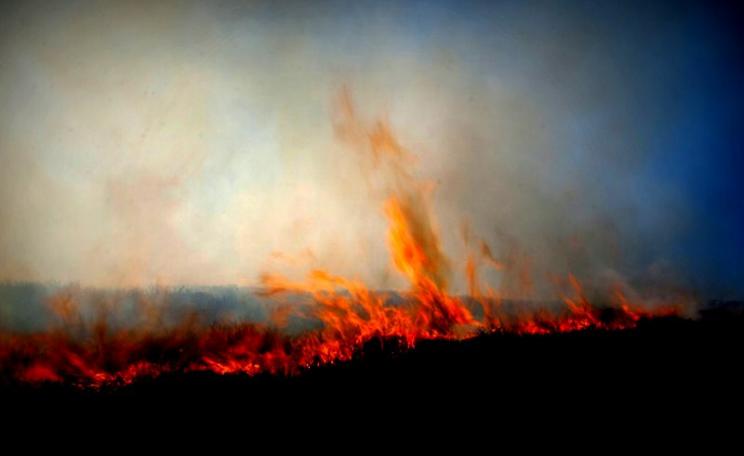The loss and degradation of wetlands is widely reported as a result of damming of rivers, extraction of water for irrigation, as well as the conversion of floodplains to rice fields, and floodplain woodlands to agricultural land.
The latest in the annual series of State of the UK's Birds report, published today, shows alarming declines among 29 migrant species which nest in the UK in summer and spend the winter around the Mediterranean, or in Africa south of the Sahara Desert.
The most dramatic declines are among species which winter in the humid zone of Africa - stretching across the continent from southern Senegal to Nigeria and beyond.
Of this group of species, which includes whinchat, nightingale, tree pipit and spotted flycatcher, 73% have declined since the late 1980s, 45% by more than half.
One of the most dramatic declines is that of the turtle dove with a decline of 88% since 1995. Heavy declines have also been recorded over the same period for wood warbler, down 66%; pied flycatcher, 53%; spotted flycatcher, 49%; cuckoo, 49%; nightingale, 43%; and yellow wagtail, 43%.
Species wintering furthest south in the Congo Basin (represented here by cuckoos, swifts and swallows) also show a substantial decline since the early 1980s.
But where are the problems occurring?
According to Martin Harper, RSPB's Conservation Director, it's hard to pinpoint where the problems lie for the species' decline:
"Their nomadic lifestyle, requiring sites and resources spread over vast distances across the globe makes identifying and understanding the causes of decline extremely complex. The problems may be in the UK or in West Africa, or indeed on migration in between the two."
However the birds' decline may be linked to deforestation in West Africa's rainforests, and the expansion of both rain-fed and irrigated agriculture, says the report:
"The loss and degradation of wetlands is widely reported as a result of damming of rivers, extraction of water for irrigation, as well as the conversion of floodplains to rice fields, and floodplain woodlands to agricultural land. Wooded savannah habitats have similarly been impacted by clearance for agriculture, wood fuel and grazing.
"Human-induced habitat changes such as these have all been compounded by climate change altering seasonal weather patterns. These habitats are essential for many birds, as they allow the birds to refuel in the autumn, and fatten up before spring migration. The loss and degradation of these habitats is an erosion of vital stepping stones on the birds’ migratory journey."
Hunting and trapping
Another problem is hunting and trapping, which "has been reported as impacting migratory birds on passage and on the non-breeding grounds during both spring and autumn migrations. Losses can be enormous. For example, 2–4 million turtle doves are shot across a number of southern European countries each year."
Birds can be taken in large numbers in certain areas, such as quails in Egypt and swallows in west and central Africa. However, "Assessing the population-level impact of hunting is difficult, as the relevant data do not exist."
The loss and degradation of wetlands is widely reported as a result of damming of rivers, extraction of water for irrigation, as well as the conversion of floodplains to rice fields, and floodplain woodlands to agricultural land.
But Alan Law, Director of Biodiversity Delivery at Natural England adds that we also need to look closer to home.
"For some species, there is growing evidence of pressure on breeding success here in England. Our focus therefore is to ensure that well-managed habitats are available in this country so that migratory species can breed here successfully."
For example, the drastic (88%) decline of turtle doves is also due to diminished breeding success in the UK. Recent research has revealed that around 96% of the UK’s turtle doves are carrying parasites which can cause the disease trichomonosis, which caused mortality in a number of adults and nestlings during the 2012 breeding season.
Smaller declines, even increases for short-distance migrants
Other birds wintering in the arid zone just below the Sahara desert have fluctuated considerably since 1970, but show a much smaller decline of less than 20% overall, with 67% of species maintaining stable populations. This group includes sand martin, whitethroat and sedge warbler.
And the species that winter north of the Sahara (the partial / European migrants) are doing well, with 56% experiencing an increase in numbers since the mid 1980s. This group includes blackcaps, meadow pipits, chiffchaffs and stonechats.
Still, "concern about migratory bird species is growing and future editions of the State of the UK's Birds report will contain a regular update to the migratory bird indicator."
To understand the changing status of the UK's migratory birds, researchers need to understand more about what's driving these declines. Evidence is currently being gathered from a variety of sources including tracking studies and on-the-ground surveys.
"The length of many bird migrations - often thousands of miles - makes it very difficult to pinpoint where and what is causing populations to fall", said Colette Hall of the Wildfowl & Wetlands Trust.
"So the more information we can get all along the migration routes - on land use changes, new infrastructure etc - the better we can target protection measures. It's important that we help build up the capacity of local bird organisations and volunteers across the world to provide vital information through their own long-term monitoring."
The report: The State of the UK's Birds is published by a partnership of eight organisations: RSPB; British Trust for Ornithology; Wildfowl & Wetlands Trust; Natural Resources Wales; Natural England; Northern Ireland Environment Agency; Scottish Natural Heritage; and the Joint Nature Conservation Committee.







